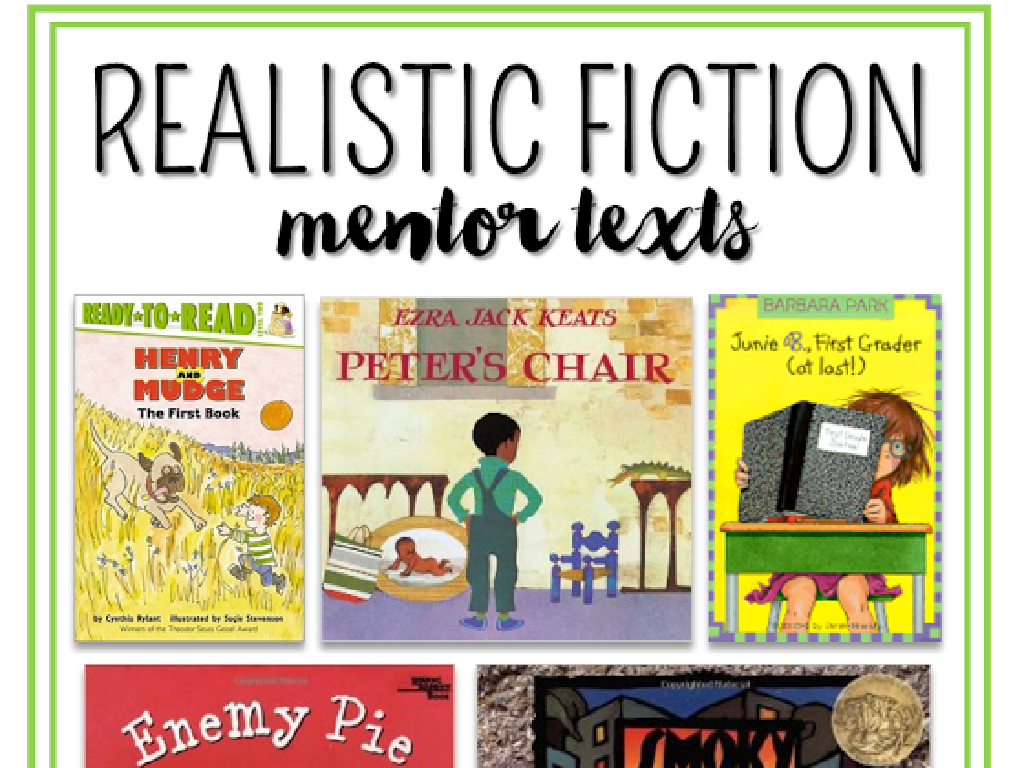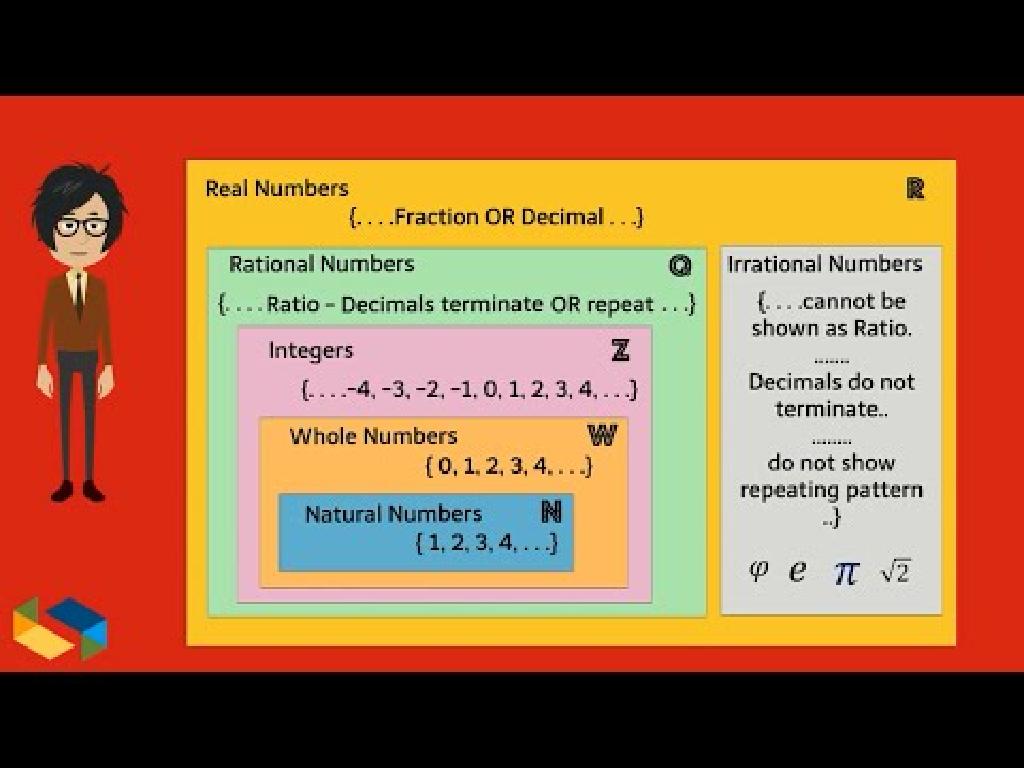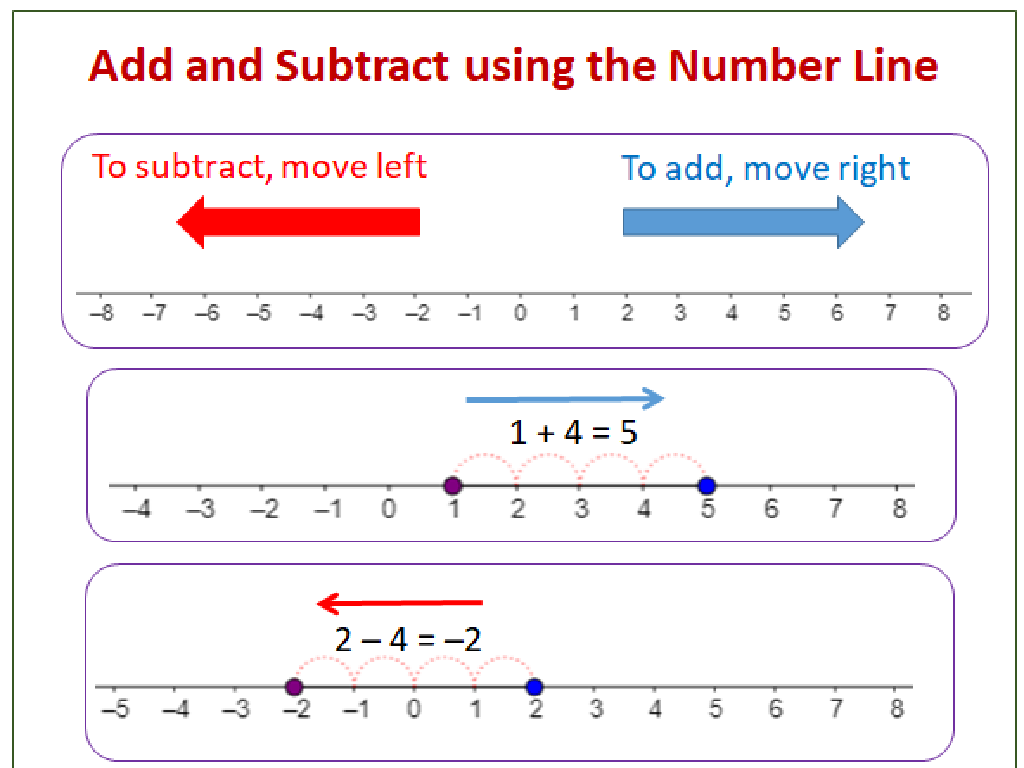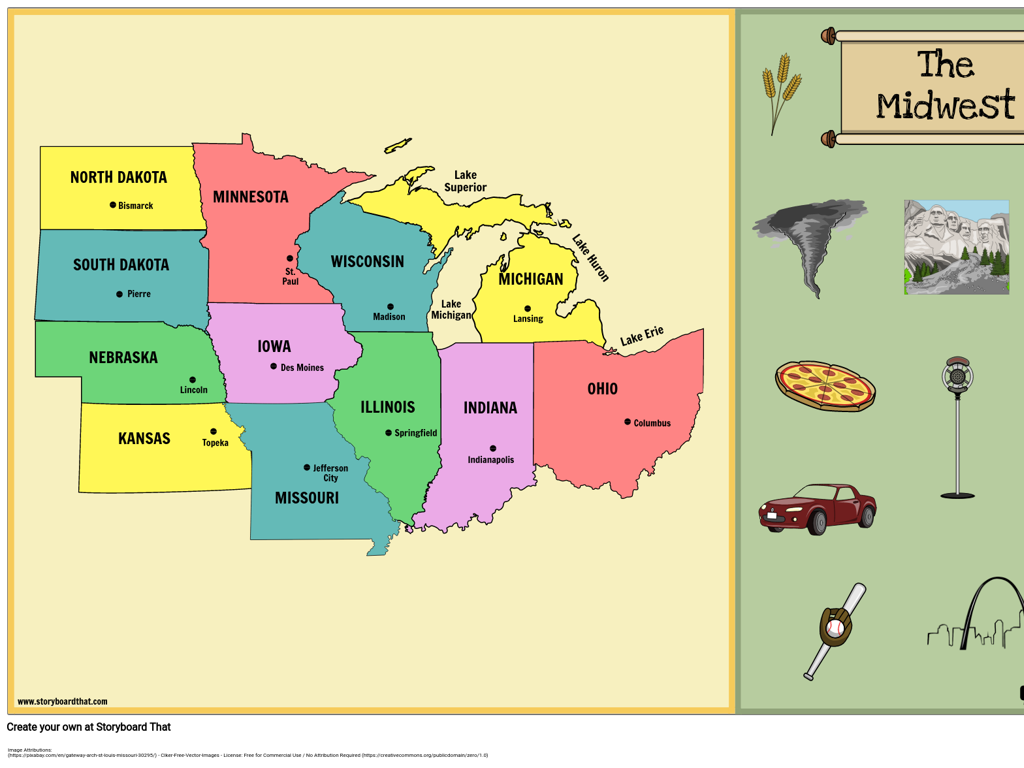Addition And Subtraction Sentences For Word Problems - Up To 20
Subject: Math
Grade: First grade
Topic: Addition And Subtraction Word Problems Up To 20
Please LOG IN to download the presentation. Access is available to registered users only.
View More Content
Welcome to Addition and Subtraction!
– Learn to add and subtract
– Adding is putting together, subtracting is taking away
– Use stories for math problems
– Stories help us understand problems, like how many apples are left
– Create your own math stories
– Think of a story about toys, and figure out the total
– Become a math story expert
– You’ll be able to tell and solve your own stories with numbers up to 20
|
This slide introduces first graders to the concepts of addition and subtraction through storytelling, making it relatable and engaging. Start by explaining that addition means putting things together while subtraction means taking things away. Use simple, relatable stories such as sharing apples with friends or counting toys to illustrate these concepts. Encourage the students to create their own stories based on their daily experiences, like playing with friends or helping at home, and to solve the math problems within those stories. By the end of the lesson, aim for the students to feel comfortable with creating and solving their own addition and subtraction stories involving numbers up to 20.
Understanding Word Problems
– Word problems are number stories
– Decide to add or subtract
– Read a story and find the math
– We’ll read a story as a class and discover the hidden math problem.
– Practice with an example together
– Example: If you have 5 apples and get 3 more, how many do you have now?
|
This slide introduces students to the concept of word problems in math, emphasizing that they are stories with numbers that require a decision to add or subtract. Start by explaining that word problems help us apply math to real-life situations. Then, guide the class through reading a simple story problem and work together to determine whether to add or subtract. Use clear, relatable examples that resonate with first graders, such as combining groups of familiar objects like apples. Encourage students to visualize the problem and use manipulatives if needed to help them understand the concept of combining or separating items in a story.
Understanding Addition
– Addition combines things
– Like putting 2 toys with 3 toys, how many in total?
– The plus sign (+) means add
– When we see +, we put numbers together
– Example with apples
– If you have 2 apples and get 3 more, count them all up
– Adding within 20
|
This slide introduces the concept of addition to first graders. Start by explaining that addition is simply the process of combining two or more groups of things together. Show the plus sign (+) and emphasize that it is used to indicate addition. Use tangible examples, such as combining apples, to make the concept relatable. Encourage the students to visualize the process by counting actual objects or using their fingers. Reinforce the idea by presenting simple addition problems that result in sums up to 20, ensuring the concept is clear and understood. Allow the students to practice with physical objects or illustrations to solidify their understanding.
Understanding Subtraction
– Subtraction means taking away
– Use the minus sign (-) for subtraction
– Example: 5 oranges – 2 oranges
– Start with 5, take away 2, count what’s left
– How many oranges are left?
– It’s like giving away 2 of your toys and counting the remaining
|
This slide introduces the concept of subtraction to first graders. Subtraction is explained as the process of taking things away, and the minus sign is introduced as the symbol used to represent this action. Use concrete examples like oranges to illustrate the concept. For instance, if a child has 5 oranges and gives 2 away, ask the class how many oranges are left to encourage engagement with the concept. This example helps students visualize subtraction as a tangible action. Encourage students to use their fingers to count and subtract, reinforcing the idea that subtraction is simply finding out how many items remain after some are taken away.
Creating Addition Sentences
– What is an addition sentence?
It’s a math phrase with numbers, a plus sign, and an equals sign.
– Symbols in addition: + and =
– Example: 2 + 3 = ?
Like a mini-story problem: If you have 2 apples and get 3 more, how many now?
– Crafting sentences from stories
We’ll use a simple story to form our own addition sentence.
|
This slide introduces first graders to the concept of addition sentences. Start by explaining that an addition sentence is a way to write down how we put together two groups of things. Show the symbols for addition (+) and equals (=) and how they are used to connect numbers in a sentence. Use the example provided to illustrate how the numbers and symbols form a question we can solve. Then, transition to creating addition sentences from word problems by telling a short story and working together with the class to translate it into an addition sentence. Encourage students to think of their own stories and how they might write them as addition sentences for practice.
Creating Subtraction Sentences
– What is a subtraction sentence?
– It includes numbers, a minus sign, and an equals sign.
– Example of subtraction sentence
– Like 5 – 2 = ?, subtracting two from five.
– Creating sentences from stories
– We’ll use a fun story to make a subtraction sentence.
– Practice with a subtraction story
– Let’s solve a story together and find the answer!
|
This slide introduces the concept of subtraction sentences to first graders. Begin by explaining that a subtraction sentence is a way to show taking away using numbers, a minus sign, and an equal sign. Show the example provided to illustrate this concept. Then, engage the students by telling a simple story and working together to create a subtraction sentence from it. For instance, ‘If you have 5 apples and eat 2, how many do you have left?’ Encourage the students to participate in making the sentence and solving it. Finish with a practice activity where students listen to a story and then create and solve their own subtraction sentences. This hands-on approach helps solidify their understanding of subtraction in a fun and interactive way.
Let’s Practice Together: Finding Math in Stories
– Listen to a story with numbers
– Find the math problem in the story
– Decide: Add or Subtract?
– Do the numbers get bigger (add) or smaller (subtract)?
– Write the math sentence
– Use numbers and symbols to show the problem
|
This interactive activity is designed to help first graders identify mathematical operations within the context of a story. Read a simple story to the class that includes a scenario involving addition or subtraction within 20. After reading, engage the students in a discussion to extract the math problem presented in the story. Guide them to determine whether the situation requires addition (combining amounts) or subtraction (taking away amounts). Once identified, assist the students in translating the problem into an addition or subtraction sentence using numbers and symbols. For example, if 3 birds were sitting on a tree and 2 more birds joined them, the sentence would be 3 + 2 = 5. Prepare to offer several stories with varying contexts to ensure students get practice with both operations.
Your Turn to Solve: Story Problems
– Read the story carefully
– Understand the question asked
– What is the story trying to find out?
– Write an addition or subtraction sentence
– Use ‘+’ for adding, ‘-‘ for taking away
– Solve the problem step by step
– Check your answer by counting again
|
This slide is an interactive activity for students to apply their understanding of addition and subtraction within 20. Start by reading a simple story problem to the class, then guide them to identify the question within the story. Encourage them to think about whether they need to combine items (addition) or separate them (subtraction). Once they’ve written their math sentence, they should solve the problem using objects, fingers, or drawings to help them count. After solving, they can verify their answer by recounting or using another method. Possible activities include story problems about sharing snacks, combining toy collections, or subtracting pencils from a set. This hands-on approach helps solidify their comprehension of math operations in real-world contexts.
Class Activity: Math Storytellers
– Pair up and create a math story
– One narrates, the other writes the equation
– Swap roles for a new story
– Practice addition and subtraction
– Use numbers up to 20 to make stories interesting
|
This activity is designed to encourage creativity and collaboration among students while practicing addition and subtraction. Start by explaining what a math story is: a short narrative that involves a math problem. Demonstrate with an example, like ‘Sally had 5 apples and got 3 more from her mom. How many apples does she have now?’ One student will come up with a similar story, while their partner listens and then writes down the corresponding math sentence, such as ‘5 + 3 = ?’. After completing one story, students will switch roles and create a new story, possibly with subtraction, like ‘Tom had 10 balloons but 4 flew away. How many are left?’ Provide guidance on creating stories that are clear and have a solvable math sentence. Encourage students to use objects in the classroom for inspiration and to check each other’s work for accuracy.
Great Work on Addition and Subtraction!
– Celebrating our problem-solving skills
– Adding and subtracting in stories
– We used addition and subtraction to find answers
– Word problems are number stories
– Imagine a story, then figure out the math
– Practice makes perfect
– Keep practicing with different stories and numbers
|
Today’s lesson was a success, and the students did an excellent job learning how to solve addition and subtraction word problems. Reinforce the concept that word problems are narratives that involve numbers, making math a part of everyday stories. Encourage the students to continue practicing with various word problems to strengthen their understanding and fluency. For homework, assign a few word problems for them to solve, ensuring they write out the sentences that represent the math. In the next class, review these problems to reinforce today’s learning and address any difficulties the students may have encountered.






